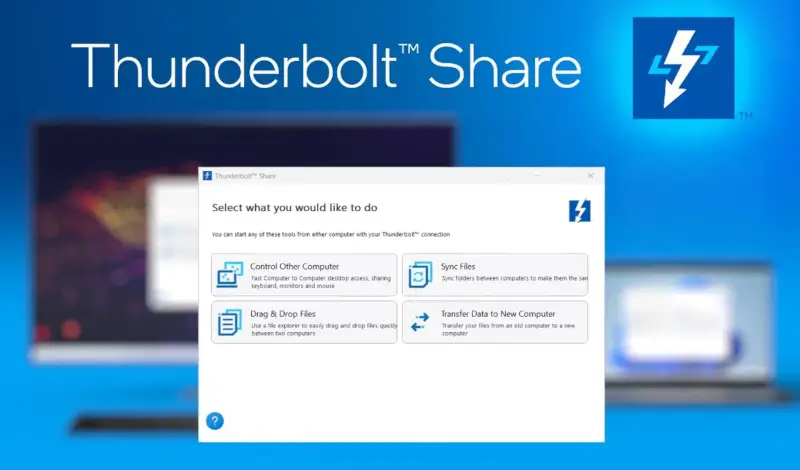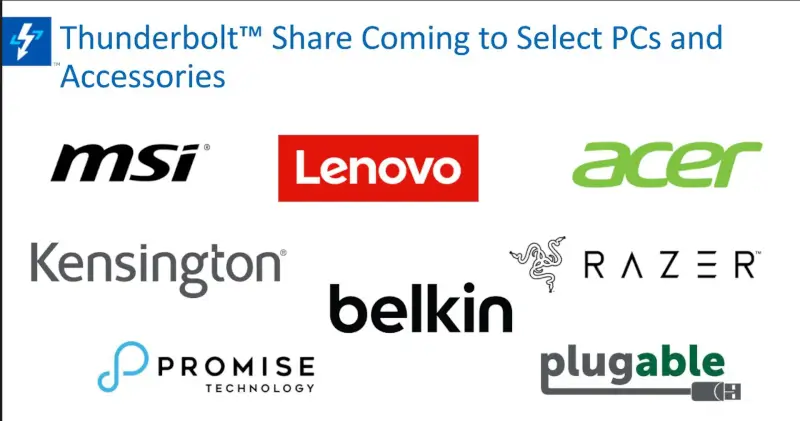Intel opens for PC connection via Thunderbolt

Intel will make it possible to connect two computers directly to each other via a Thunderbolt cable. Thunderbolt Share can be used to share files, as well as to connect displays and other devices. The new function in Intel's High-Speed Cable standard provides four options after connecting the two computers.

It is possible to control the other computer, synchronize folders, transfer files via a dual Explorer interface, and transfer data from an old computer to a new one. When an image is transferred from a computer, it is transferred in its original resolution without any compression. At 1080p this is guaranteed at 60Hz; at higher resolutions, the refresh rate depends on the capabilities of both devices.
The connection can be established via a direct point-to-point connection between the two computers, but also via a Thunderbolt-enabled dock or monitor. Each device must offer Thunderbolt 4 or 5. Like Thunderbolt itself, the sharing option uses Intel VT-d to secure the transfer. Additionally, a password may be required and sensitive operations may only be performed locally.
System administrators can disable or limit functionality as desired via Group Policy. Currently, Thunderbolt Share only works on Windows, not macOS or Linux. Thunderbolt Share is essentially a software product that Intel licenses to manufacturers of computers and other Thunderbolt accessories. You can't buy it right now, but you can install it on two computers when you buy a Thunderbolt Share-certified device, whether it's one of those computers or an accessory like a dock.

MSI, Lenovo, Acer, Kensington, Belkin and Razer are among those said to be working on PCs and accessories with a Share license. The first units will be on the market this year.
Latest network
-
17 Marnetwork
-
16 Decnetwork
ASUS ZenWiFi BT10
-
24 Maynetwork
ASUS ROG Rapture GT-BE98
-
16 Maynetwork
Intel opens for PC connection via Thunderbolt
-
22 Marnetwork
Ultra Ethernet Consortium expands to 55 members
-
26 Jannetwork
MSI WiFi 6E USB-adapter
-
16 Decnetwork
Wi-Fi 7 soon ready for rollout
-
23 Junnetwork
ASUS RT-AX59U
Most read network
Latest network
-
17 Marnetwork
Netgear Nighthawk M3
-
16 Decnetwork
ASUS ZenWiFi BT10
-
24 Maynetwork
ASUS ROG Rapture GT-BE98
-
16 Maynetwork
Intel opens for PC connection via Thunderbolt
-
22 Marnetwork
Ultra Ethernet Consortium expands to 55 members
-
26 Jannetwork
MSI WiFi 6E USB-adapter
-
16 Decnetwork
Wi-Fi 7 soon ready for rollout
-
23 Junnetwork
ASUS RT-AX59U






